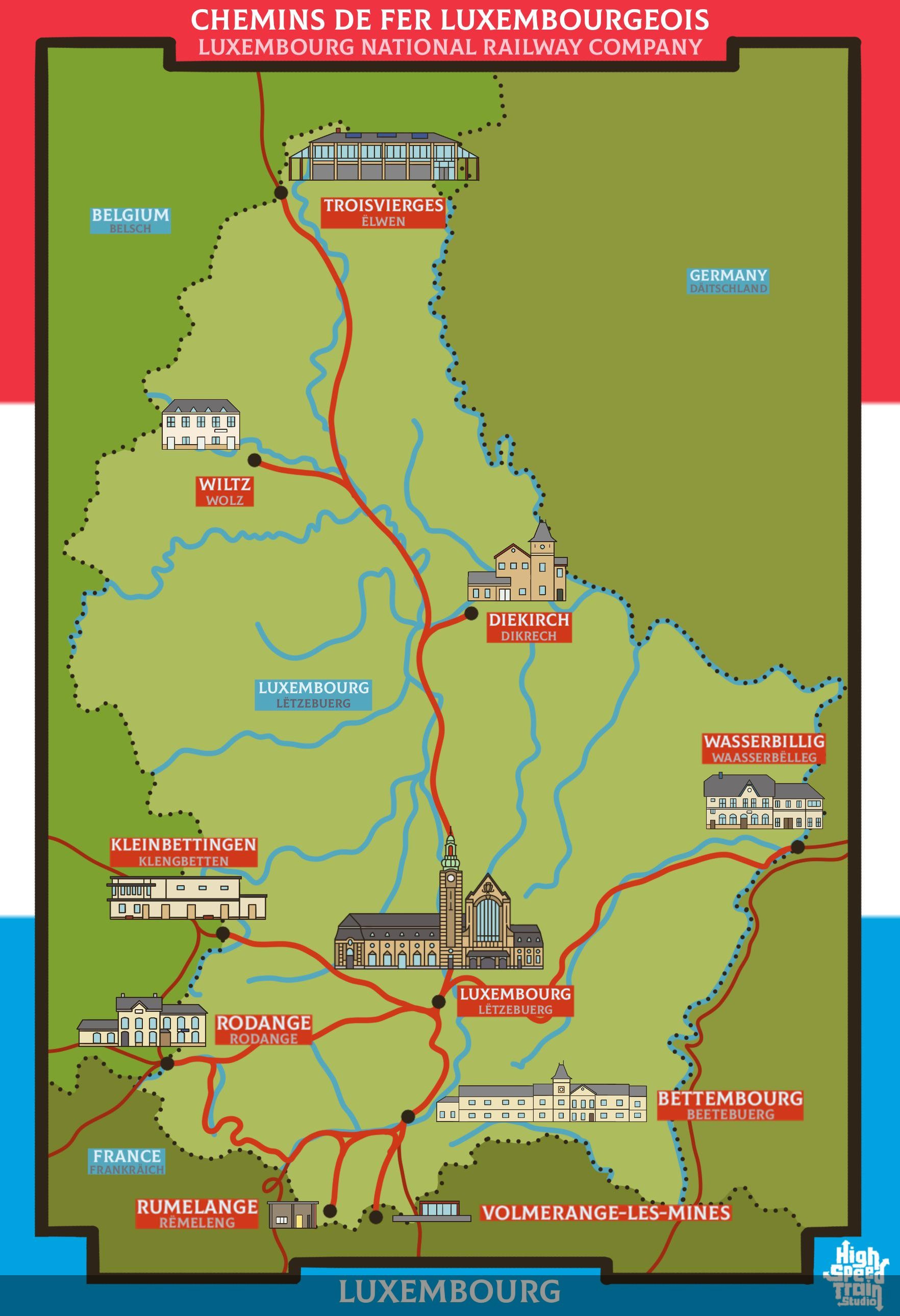Rail Network Map of Luxembourg


David Chen
Data Visualization Specialist
David Chen is an expert in transforming complex geographic datasets into compelling visual narratives. He combines his background in computer science ...
Geographic Analysis
What This Map Shows
The rail network map of Luxembourg provides a comprehensive view of the country's railway infrastructure, highlighting the various lines that connect major cities and towns. This visualization allows us to understand not only the routes but also the importance of rail transport in Luxembourg’s connectivity and economic development. With a small geographic footprint, Luxembourg boasts an efficient rail system that plays a crucial role in the nation’s transportation landscape.
Deep Dive into Luxembourg's Rail Network
Ever wondered how a small country like Luxembourg manages its transport needs? The rail network, operated primarily by the Société Nationale des Chemins de Fer Luxembourgeois (CFL), is a testament to the efficient use of resources in a compact area. Spanning approximately 300 kilometers, the railway system connects not just the capital, Luxembourg City, but also crucial towns such as Esch-sur-Alzette, Differdange, and Ettelbruck.
Interestingly, Luxembourg's rail services are characterized by their punctuality and frequency. The network operates on a mix of electrified and non-electrified lines, with electrification primarily focused on the core routes. The CFL offers both domestic services and international connections, with trains linking Luxembourg to neighboring countries such as Belgium, France, and Germany. This international dimension is vital, especially for daily commuters and tourists who rely on efficient transport options.
The railway system integrates seamlessly with other modes of transport, including buses and trams, facilitating a holistic public transportation network. In fact, the government has made significant investments in enhancing connectivity, with new projects aimed at modernizing the existing infrastructure and expanding the network. What's fascinating is how Luxembourg has also introduced free public transport, including trains, which has further boosted rail usage and reduced traffic congestion.
This rail network is not just about transportation; it's a lifeline for economic activities. The logistics sector in Luxembourg heavily relies on the rail system for the movement of goods. The country’s strategic location at the heart of Europe makes it an essential hub for freight transport, with the rail network serving as a vital link in the supply chain for many businesses.
Regional Analysis
When we analyze the rail network by regions, it’s clear that Luxembourg City serves as the central hub, with most lines radiating outwards to other regions. The connection between the capital and Esch-sur-Alzette is particularly significant, as this area is known for its industrial heritage. Similarly, the line to Differdange connects passengers to a town steeped in history and cultural significance.
In contrast, the northern regions, such as Clervaux and Wiltz, offer fewer services, reflecting the lower population density and demand. However, these areas are still connected, ensuring that even the more remote parts of the country are accessible. The differences in rail service frequency and connectivity illustrate the balance between urban and rural transportation needs, highlighting the challenges faced by the CFL in catering to a diverse population.
Significance and Impact
The rail network in Luxembourg is not just a means of transport; it symbolizes the country's commitment to sustainable development and environmental responsibility. By promoting rail travel, Luxembourg aims to reduce carbon emissions and mitigate traffic congestion in urban areas. This commitment aligns with broader European goals for sustainable transport solutions.
Looking to the future, the railway system is poised for growth. With ongoing projects aimed at expanding and modernizing the network, Luxembourg could enhance its role as a transport hub even further. The integration of technology, such as real-time tracking and improved scheduling, is likely to make the travel experience even more user-friendly.
In conclusion, the rail network map of Luxembourg is more than a simple visualization of routes; it encapsulates the essence of how the country approaches transportation, connectivity, and environmental sustainability. As more people turn to rail as a preferred mode of transport, it will be exciting to see how Luxembourg continues to innovate and adapt its rail services in the years to come.
Visualization Details
- Published
- August 3, 2025
- Views
- 122
Comments
Loading comments...